CALLIANDRA
Calliandra
Benth. in Hook., London J. Bot. 2: 138. 1840; Fl. China @ eFloras.org 10: 60; Fl. Pak. @ eFloras.org
Shrubs or small trees, usually unarmed. Leaves bipinnate, eglandular; stipules often persistent or sometimes spinescent, rarely absent. Pinnae 1 to several pairs; leaflets opposite, small and numerous or large and from few pairs to one. Inflorescence globose heads, axillary or terminal racemes. Flowers actinomorphic, bisexual, 5- or 6-merous, hypogynous. Calyx campanulate, usually toothed. Petals united to middle; middle flowers sometimes heteromorphic with an elongated tubular corolla. Stamens numerous (to 100), red or white, +/- united into a tube, long, exserted and showy; anthers mostly glandular hairy. Ovary sessile, unilocular, ovules numerous, placentation marginal; style filiform. Legumes linear, straight or slightly falcate, strap-shaped, flat, rigidly leathery, often narrowed to base, margin thickened, 2-valved, valves elastically opening from apex to base, continuous inside. Seeds obovoid to orbicular, compressed.
149 species
Calliandra haematocephala
Calliandra haematocephala
Hassk. Retzia. 1: 216. 1855; Parker, For. Fl. Punj. ed. 1. 201.
1918 (Reprint 1973); Fl. China @ eFloras.org 10: 60.
Shrubs or small trees, 1-4 m tall, deciduous. Branchlets brown, cylindric, rough. Stipules ca. 6 mm long, ovate-lanceolate, margin ciliate, persistent. Leaves alternate, bipinnate, up to 14 cm long; petiole 1-3.5 cm long; pinnae 1 pair, each pinna 8-13 cm long; rachis 6.5-9 cm long (including ca.1 mm long petiolule), adaxially channelled, pubescent; leaflets 4-10 pairs, pairs of leaflets unequal in basal region of pinna, inner being much smaller, becoming gradually equal towards apex, obliquely lanceolate, sessile to subsessile, 1.5-3.0 cm x 0.7-1.5 cm, apex obtuse mucronate; petiolule base pulvinate, annular indurate. Heads axillary, 3-5 cm in diameter (including stamens); peduncles 1-5 cm, brownish-red pubescent, hairs scsnty. Flowers bracteate, actinomorphic, bisexual, 5-merous, hypogynous, ca. 3.8 cm long, sessile or subsessile. Calyx campanulate; tube 3-3.5 mm long; 5-toothed, teeth 0.5 mm, triangular, pale greenish-yellow. Corolla funnel-shaped, pale greenish-yellow; tube ca. 6 mm long; lobes 5, ca. 3 mm long, ovate-triangular, reflexed. Stamens numerous, scarlet, very brilliant; filaments much exserted, monoadelphous at base, tube white, 10-15 mm long, free part of filaments filiform, ca. 1.8 cm long, scarlet; anthers small, eglandular. Ovary stipitate, flat with ridges at sutures, pubescent in upper part, ca. 3 mm long, unilocular, many-ovuled, placentation marginal; style ca. 3.5 cm long, filiform; stigma minute, capitate. Legumes dull brown, stipitate, 6-11 cm x 5-13 mm, linear-oblanceolate, beaked, flat, strap-shaped, straight or slightly falcate, rigidly leathery, narrowed to base, thick ridges at sutures, 2-valved, valves elastically opening from apex to base, continuous inside, valves reflexed after dehiscence. Seeds 5 or 6, brown, oblong, 7-10 mm x ca. 4 mm.
Common Names: Red Powderpuff, Pink Powderpuff, Red Tassel Flower, Rose Cascade
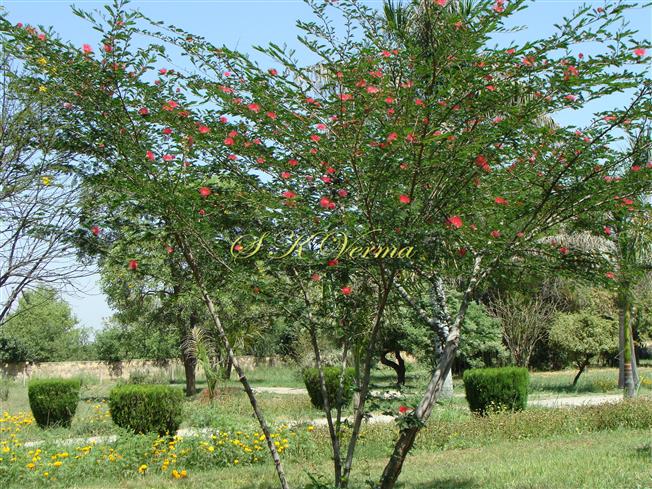
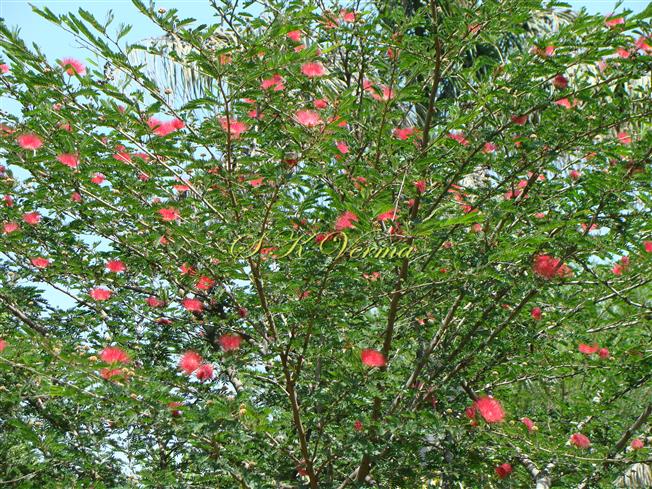
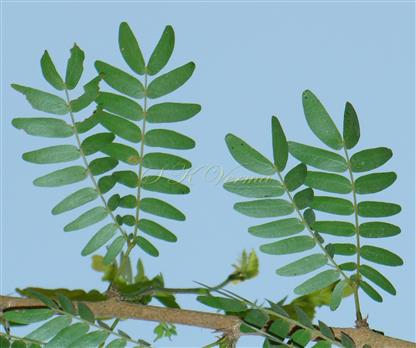
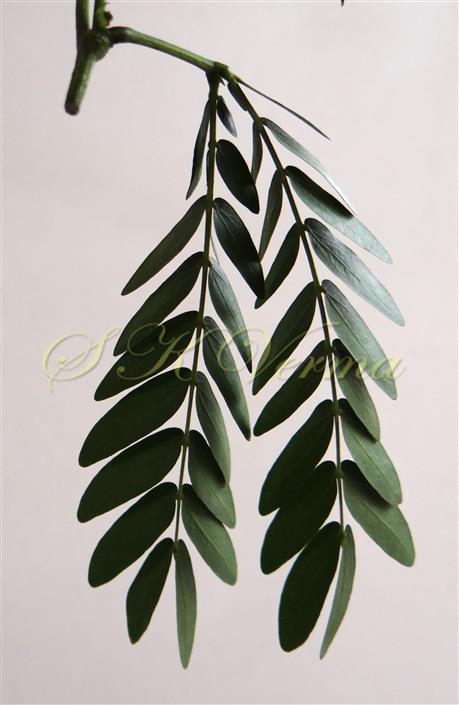
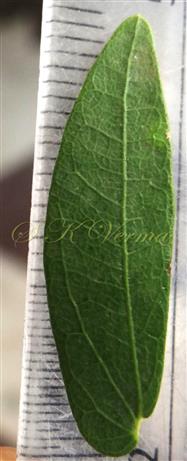
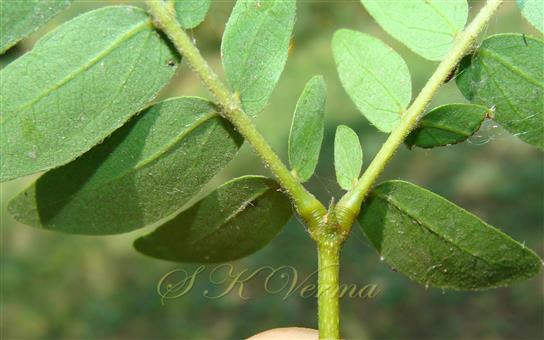
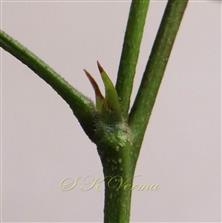
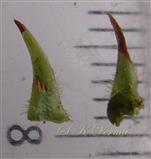
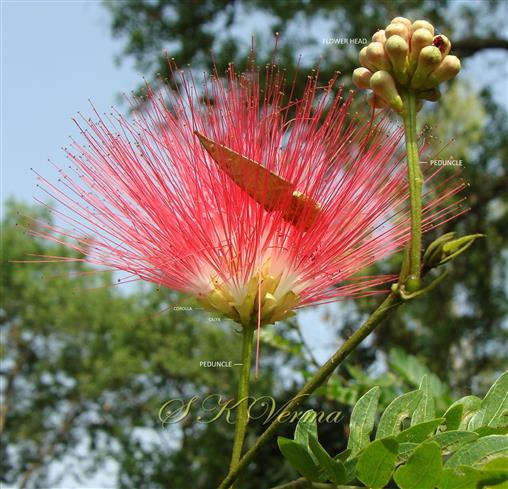
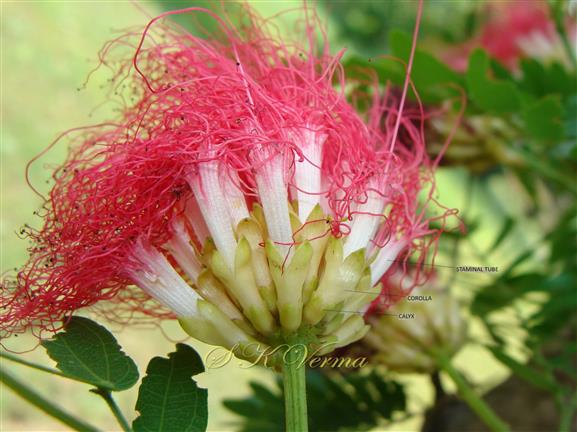
-DSC09773.jpg)
.jpg)

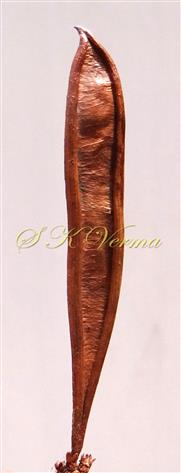
- DSC09765.jpg)











-DSC09773.jpg)
.jpg)
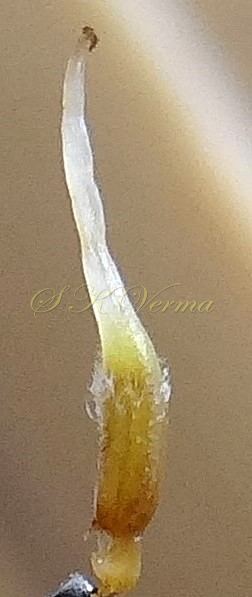

- DSC09765.jpg)